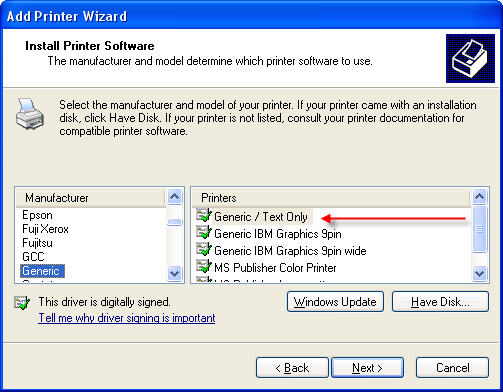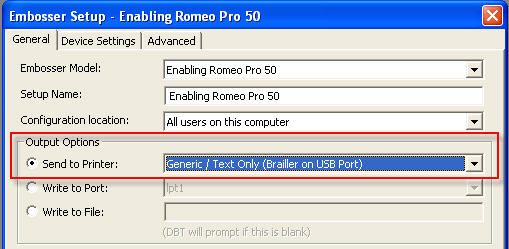
Most modern desktop and laptop computers do not have Parallel or Serial Ports. However, many older embossers still in use do not have a USB port. So how can you connect your Parallel or Serial embosser to your computer?
If you have a desktop PC, one of the simplest ways is to add an expansion card to provide the Parallel or Serial port you need.
If your embosser has a Parallel port, another option is to purchase a "USB to parallel cable." An Internet search should result in a wide choice of local suppliers. Follow the manufacturer's installation instructions to attach the cable.
In the following example we have used a cable purchased from Maplin, Part Number A94BF (http://www.maplin.co.uk). The installation process may vary with alternative makes and models, but in principle should be the same or similar.
Note: The Windows process below is normally specific to a particular USB port. You should choose a USB port which you will always use to connect your embosser. Before you add a "printer" as documented below, make sure you first close
You now need to "Add a Printer," which is done in the normal way in Windows. In particular, you should select "Local Printer," and specifically NOT ask Windows to detect the printer automatically.
You will then be asked to select a printer port. From the drop down list of ports, look for "USB### (Virtual Printer Port for USB)," where ### will be a USB port number. If more than one USB port appears in the list, and the newly purchased cable for this purpose was the last thing you connected to the computer's USB ports then choose the port with the highest number.

At the next dialog, you will be asked to select a printer. In this case, from the Manufacturer list select "Generic," and from Printers list select "Generic /Text Only" as shown below.

You will be asked to name your printer, and at this point, we suggest you enter a meaningful name by adding "(Brailler on USB Port)" - or the like - to the name suggested by Windows.
Eventually, the process will ask if you wish to print a test page. We suggest you answer "Yes". Provided you have selected the correct port, this test will emboss about two pages of test data. What is important is that you get the output, not the braille itself. The braille is likely to be untranslated.
You are now ready to set up your embosser inside

We suggest you test the installation with a short document to ensure that you have correctly configured your embosser.